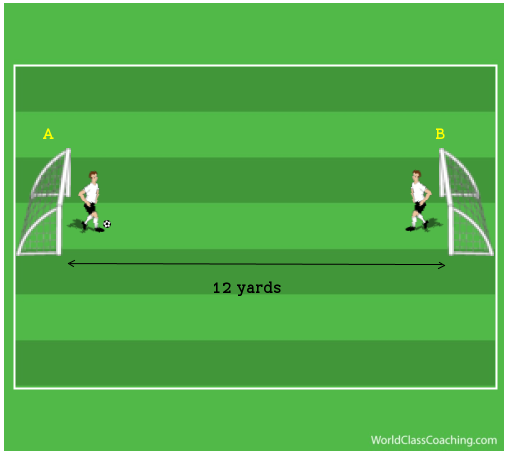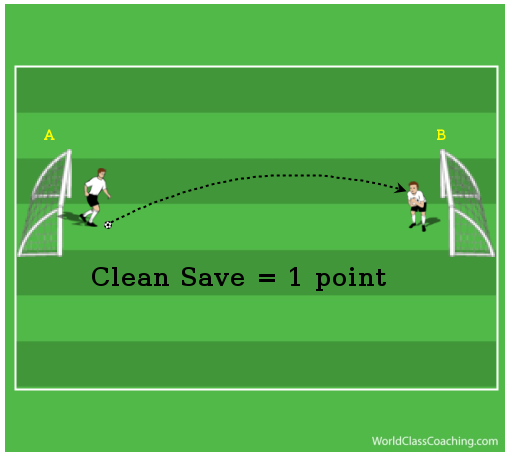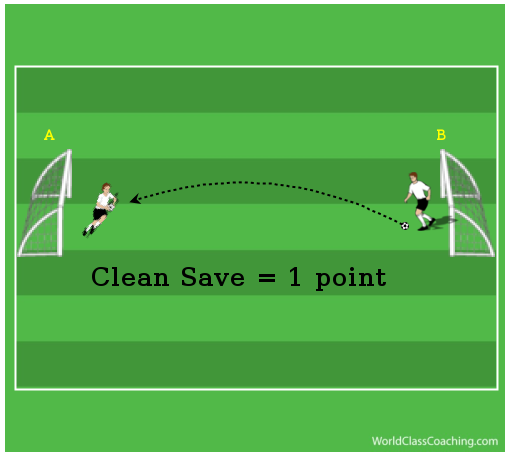By Jason Stockmann -
Getting players to help each other train while at a practice is an invaluable tool for multiple reasons. First and foremost, from a coaching perspective, it can relieve some of the time-crunch pressures we face by letting some players do their own thing while we focus on other aspects; it also lets us impart a sense of responsibility for personal development on the players themselves. From their perspective, this responsibility looks like a bit of freedom and control over their own soccer destiny…and it is a fun and subtle method to increase team cohesion.
I’m a firm believer that this player-to-player training is especially helpful when it is done with goalkeepers. Whether at a practice or during pre-game warmups, two goalies working with each other not only potentially frees up coaching resources, but more importantly it forces/allows for the keepers to help each other. A lot of learning at younger ages comes from observing and competing with peers and there is no reason not to harness this in your own team. Maybe you have one keeper who excels at diving plays and the other is better at angles; letting them work together challenges each individual and facilitates them sharing information and experiences, perhaps more than any individual coach-to-goalie drill could do.
The drill I offer up today is a simple but effective drill I call “Shoot ‘n Save” and it offers the following benefits to keepers:
• Kick accuracy and power; saving shots, speed and dexterity
I like this drill for keepers because it lets them practice personal dexterity coupled with the need for quick decision making. It also can act as a penalty-kick simulation and works on kicking and throwing accurately at short distances. If done at a quick pace, it can also serve to put the keepers on the defensive very soon after releasing the ball.
SETUP
- Players: two keepers
- Gear needed: two goals (6’x12’ or 6’x18’); 6-8 soccer balls (3-4 with each keeper)
INSTRUCTIONS
Place the two goals 12 yards apart with a keeper in each goal.
Staying close to their own goal, Keeper A attempts to score on Keeper B by set piece shot, line-drive volley, throwing…whatever method they wish to use. If Keeper B can make a clean save, they earn 1 point; if Keeper A scores or the save is ‘lucky’, awkward or haphazard, no point is earned. At a 12-yard distance with relatively small goals, a clean save will most likely take the form of the keeper catching the ball, but a solid punch or deflection is perfectly fine as well.
Goalie B then attempts to score on Goalie A. Do this drill for 6 minutes or until one keeper has earned 15 points.
[wpsharely id="821"][/wpsharely]Note that points are only earned on a clean save as the main focus of this drill is to test the dexterity and quick thinking of the keeper to make clean saves that effectively end a play or allow for a quick counterstrike.
There should be little downtime for the keepers during this drill. Even with missed or deflected shots, the backup balls should ensure quick turnarounds forcing the keepers to stay aware and alert.
DRILL OPTIONS
- Focus on one delivery method (only set piece shots, only throws, etc.)
- Start with each keeper verifying the other is ready and be very deliberate in delivery; ramp up to quick returns, giving no warning, faking delivery, etc.
- For younger players (U6-U9), decrease goals size and/or distance between goals
- For older (U-14+) or more experienced players in younger age groups (U10-U13), increase goal size and/or distance between goals.
By Jason Stockman - Coach at Missouri Rush





